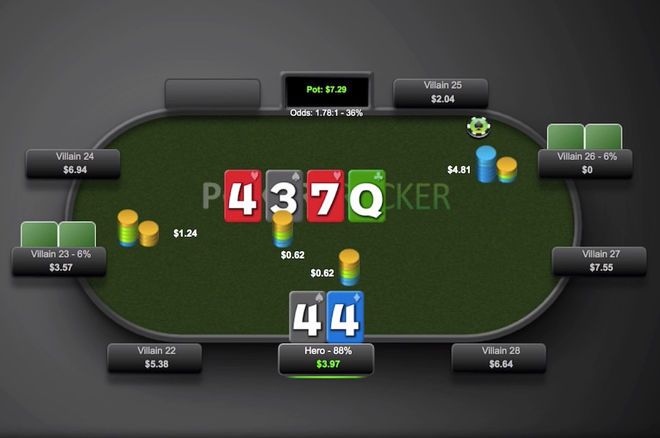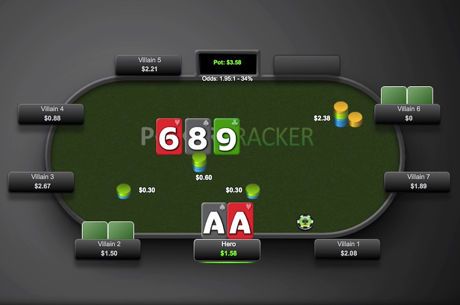Is it Ever Correct to Fold a Set in a Low Stakes Poker Game?

When you hit a set at the poker tables, it's kind of like Christmas morning when you were 10 years old. Okay, maybe I am being a little bit overdramatic, but I am sure you know the feeling!
You look down at pocket fours and proceed to see a flop. The heavens are clearly smiling down on you today as a beautiful four drops on the board giving you an extremely well hidden and nearly unbeatable three of a kind.
Time to win a big pot right? Let's try and get all the chips in the middle!
Well, usually that is the case. In fact I would say that if you used this strategy 100 percent of the time you probably would not be making a big mistake. This is especially true in low stakes poker games where most players notoriously have a hard time folding any kind of pair or draw.
However, I would argue that if you truly want to play poker at an elite level you will learn that occasionally situations arise when you should be getting away from your set.
Now let me be clear that I am referring to probably less than 5 percent of all instances when you hit a set. But it is still important to discuss nonetheless.
Here is a perfect example of a hand where we hit a set with pocket fours and the action proceeds to get very, very crazy, suggesting a fold might actually be in order:
Beginning with preflop in this hand, I disagree with the limp. I think we should always be raising in this situation, especially with the dead money involved from the random preflop poster in middle position. Also, while I forgot to mention it in the video, I think folding small pocket pairs from the first few seats in a full ring poker game like this is perfectly fine as well.
Limping is the worst option by far in my opinion because it fails to take the initiative in the hand which is a massive part of winning poker. And as we see later on in the hand, limping can also lead to all kinds of terrible situations where you don't really know where you stand or what to do.
We manage to flop middle set with pocket fours, but the board is very draw heavy. There is one made straight for anyone with 6x5x and there are numerous straight draws, flush draws, and combo draws. There are also tons of of two-pair hands possible.
Remember that this is a limped pot, so the ranges for both of our opponents are extremely wide.
Nevertheless, it is also important to remember here that we are still way, way ahead of almost everything on the flop. In fact there are only two hands that currently beat us — 6x5x and 7x7x.
Understanding Player Type is the Key to Most Poker Hands
When the tight-passive player leads out on the flop from the small blind, this is typically going to indicate a strong range. This is not the player type who is messing around very often, especially versus multiple players.
However, since we are so far ahead of everything and there are multiple draws, I do like fast playing our hand here with a raise. This is especially true at the lower stakes where many players have a very difficult time letting go of two pair or a draw here, for instance.
The turn is where things start to really get interesting in the hand. The tight-passive player leads out for full pot this time.
I think the decision to just call is fine, because this is really starting to feel like we are up against a monster hand. Also (and once again), tight-passive players like this at the lower stakes are simply not known for screwing around and betting big into multiple opponents.
When the recreational player then raises behind on the turn and the tight-passive regular jams, I am agree with the decision to fold. It is very close and I hate folding a set, but I think this is one of those 5 percent of situations where there is a pretty good chance that we are behind.
I really think the best play here, though, is to avoid this situation entirely by either raising or folding preflop. Raising would narrow the ranges considerably, and if the player had raised preflop I probably would never even consider folding here.
But I want to know your thoughts. How would you have played this hand? Do you like the limp preflop or would you raise or fold? What about postflop, what line would you take?
Let me know below.
Links mentioned in the video:
Nathan "BlackRain79" Williams is the author of the popular micro stakes strategy books Crushing the Microstakes, Modern Small Stakes, and The Microstakes Playbook. He also blogs regularly about all things related to the micros over at www.blackrain79.com.









